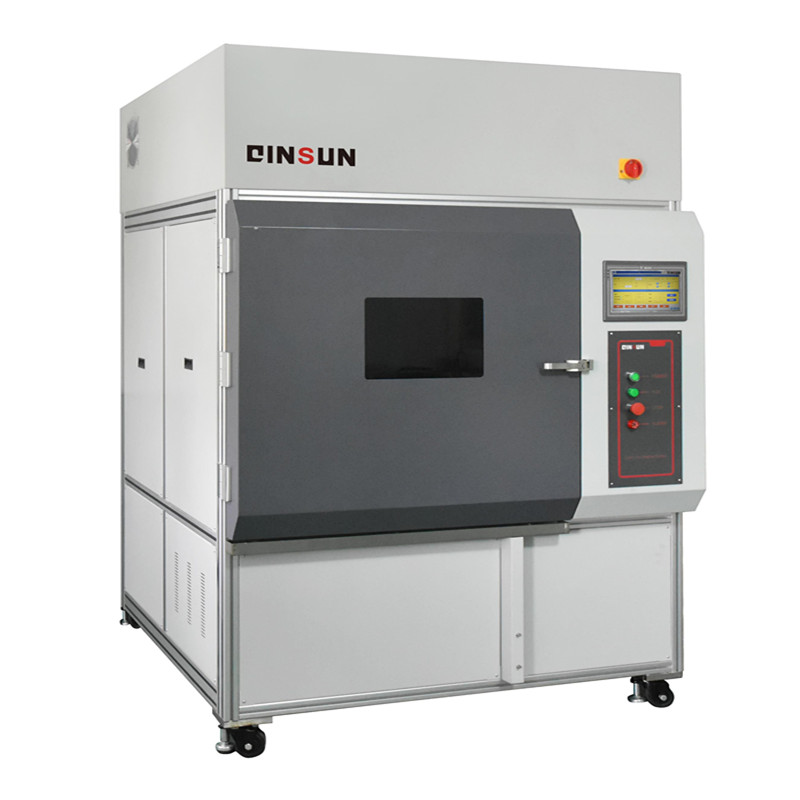Si4000 Xenon Lamp Aging Tester Six-step Leak Detection
The xenon lamp aging tester uses the internal core component xenon lamp tube to simulate the full sunlight spectrum, simulates the aging law of materials under different environmental conditions, evaluates the weather resistance of materials and products through experiments, and is used in many industries. However, during long-term use, some faults such as leakage will occur. The R&D technical engineer of Standard Group (Hong Kong) Co., Ltd. mainly introduces the six-step leak detection of the xenon lamp aging test box, hoping to help every customer.
As a modern technology enterprise integrating R&D, manufacturing, sales, training, and service, Standard Group (Hong Kong) Co., Ltd. is committed to delivering more testing instruments to the market, providing textile, leather, combustion, automotive interior and exterior trim, material environmental climate aging and other testing instruments, and can accept non-standard customization. Before purchase, targeted tests can be carried out according to customer requirements to ensure that the purchased instruments are applicable.


Six-step leak detection:
1. Cold system pressure leak detection: This method can easily find leaks in the exposed part of the refrigeration system, and then find internal leaks. If the refrigeration system is not leaked by nitrogen, it can be judged that the refrigeration system is dirty and blocked.
2. Freezer leak detection: Open the overhaul cover of the test chamber, there is a low-pressure pipe and a capillary tube to the upper mite low-temperature chamber. Weld the low-pressure pipe and capillary connection, seal one end of the capillary tube, connect the 5mmx30mm copper tube to the welded interface of the low-pressure pipe, and connect one end to a three-way valve (with a 2.4kg pressure gauge). If nitrogen is pressed in, it means that the low-pressure evaporator is leaking nitrogen.
3. Evaporator internal leakage: The low-pressure pipe and capillary tube are welded at the rear inspection port of the xenon lamp aging test chamber, the low-pressure pipe and capillary tube of some copper tubes are welded, the compressor maintenance uses low-pressure end face connection, and the welding uses a 5mmX300mm carrying tube, and the other end is connected to a three-way repair valve (with a 2.4kg pressure gauge). If nitrogen is added to the system to maintain pressure, the freezer evaporator, the exposed part of the compressor condenser, the filter, the solenoid valve, and the capillary tube are tightened, indicating that the pressure is maintained normally. If nitrogen leaks, it needs to be welded in time.
4. Refrigeration cycle leak detection: The cryogenic box evaporator consists of twoparts, so the internal leak detection should be carried out twice. First, peel off the aluminum foil paper on the back of the BCD203B against the lower left tube box. There are two low-pressure copper pipe welding heads inside. Seal the welding heads by hand, weld the steel pipe joint, take out the BCD203B first, then connect the lower left tube box, and two low-pressure copper pipe welding heads, seal the welding heads by hand, and then install quick connectors on the two copper pipe ports from top to bottom.
5. Fill the two quick connectors (or three-way valves) with 1MPa compressed dry nitrogen to see if the pressure gauge drops. If the pressure drops below, the greenhouse evaporator is internally leaking.
6. When performing pressure detection, pay attention to changes in ambient temperature. If the ambient temperature drops, the pressure cannot maintain constant pressure.

